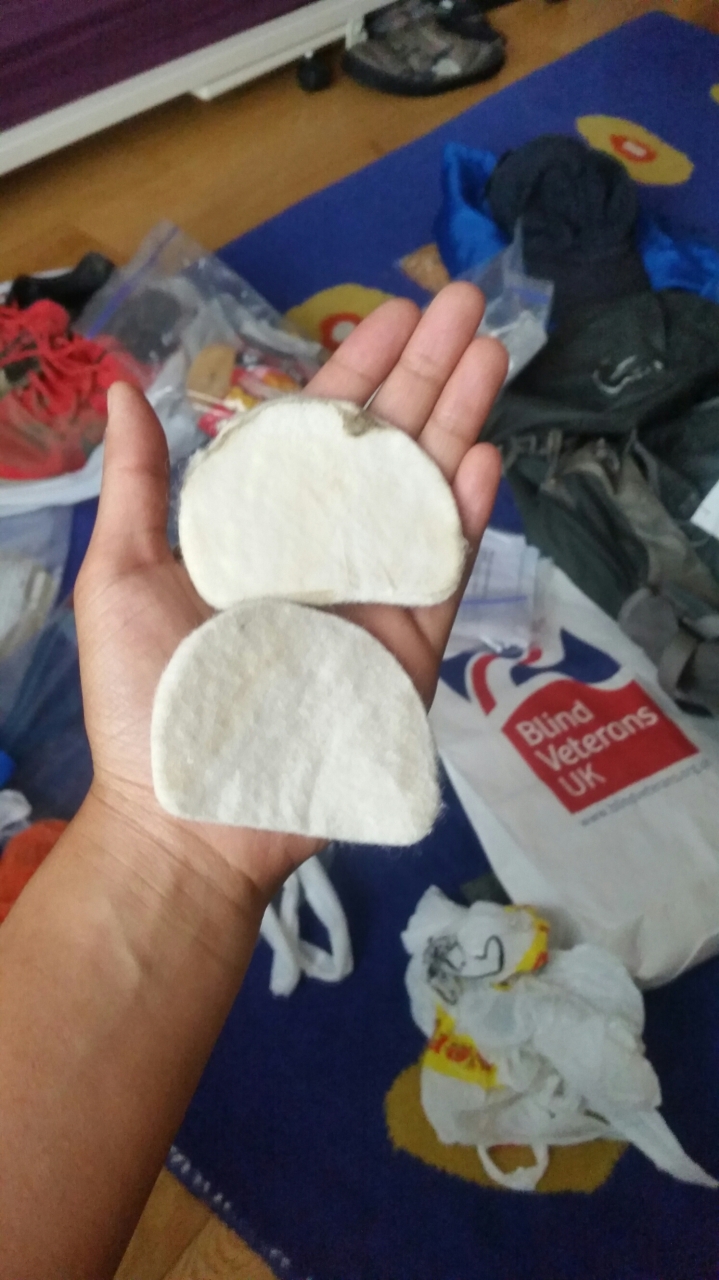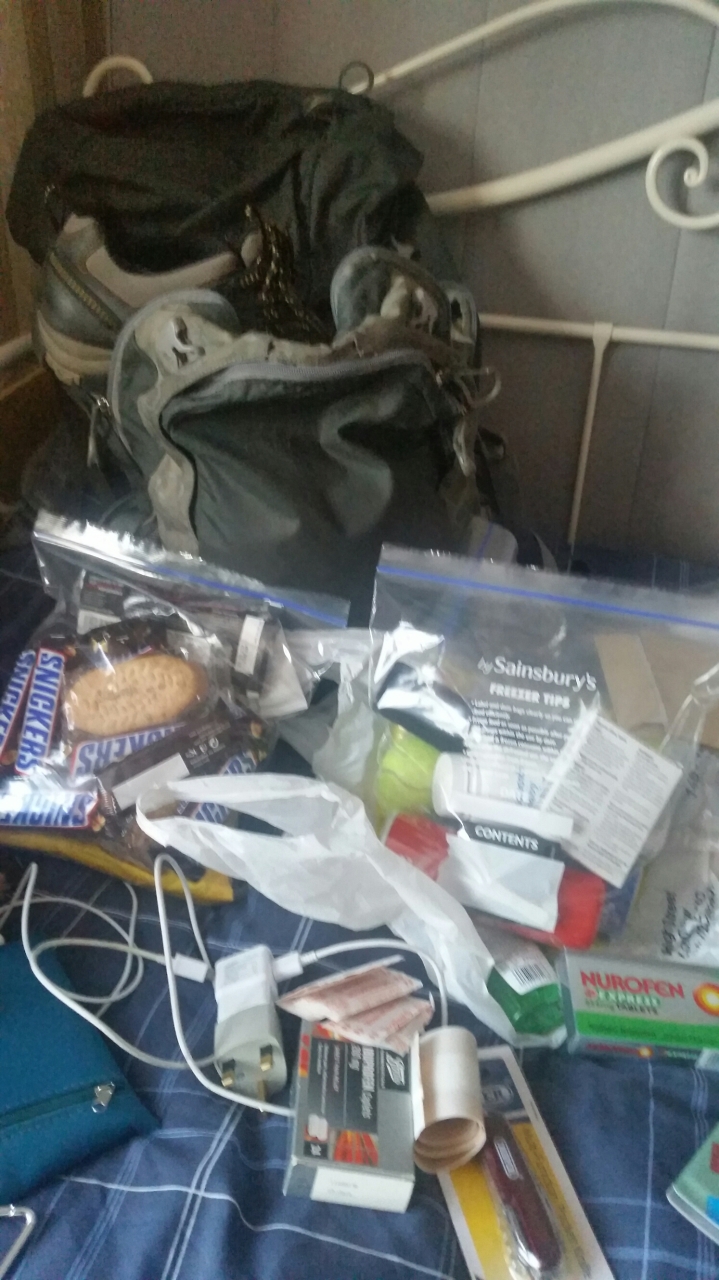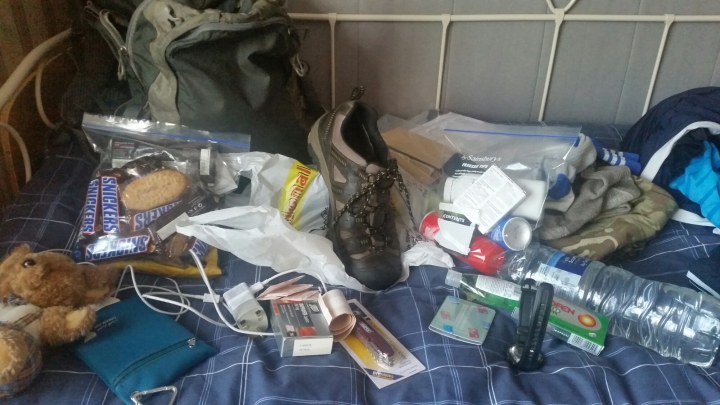To Future Me
If you’re going to do another challenge of this size, you’re going to need a lot of things to help complete the journey.
Don’t worry, the organizers will give you a checklist in advance. But from personal experience, these are the things that I used a lot of in last year’s trek which really helped me through.
Here’s what you’ll need:
First Aid:
- Ibuprofen/paracetamols – lots of painkillers
- Pads for the balls of your feet
- Deep Freeze spray/cream
- Deep Heat spray/cream
- Needles
- Sports tape
- Compeed – blister plaster
- Knee brace
- Baby powder.
This is really important and your first aid kit will be your most used equipment. I can’t stress enough the importance of foot care on this journey. Your feet are going to take a pounding. Blisters will inevitably form. Unless you combat this, blisters can seriously affect your enjoyment or worse, end your journey before finish line. Sod that! The best you could do is try to prevent it as far as you can through good foot care at each checkpoint. I tend to get blisters on the balls of my feet so those pads (which you can buy at Boots) really helped cushioned my steps as well as act as a great plasters to keep my feet together. They are VITAL! Deep Freeze and Deep Heat are great for soothing aching legs and needles are there just in case you need to pop some blisters. The baby powder was massively helpful even though it was not on the the recommended trek kit checklist sent by the organizers. You’ll get a lot of chaffing. Baby powder help soothes that pain and reduce friction from whatever it is, be it back and bag.
Even before the start of the event, I highly recommdened that you strap up before you start walking. Put your pads on, put on your plasters and all the sports tape you need yo secure everything in place.
Your first aid kit is going to be the most important thing you bring on the trek so if you’re unsure whether to bring anything extra, take it – better to be safe than sorry.

Food
- Sugary snacks – Chocolate bars, Haribo’s, jelly babies, M&M’s, energy bars ect.
- Peanuts
- Water
- 3 litres of water (1l bottle to hold along the journey, 2l bottle stashed in bag)
Needless to say, but keeping yourself hydrated is extremely important to keep you moving. Load up on sugary food too like chocolate and Haribo/jelly babies. These sugary sweets can provide that extra energy boost during the walk and can lift morale by just a fraction. Don’t worry about the calories – you’ll burn through those calories in minutes.It all helps. Don’t bring hot food. The checkpoints will provide hot food and water plus everything else you’ll need to continue the next 13-15kms but it’s always good to have something from home and something to have along the way in-between checkpoints. Always eat, even if you’re not feeling hungry, the sun heat can trick your mind into thinking you’re not hungry when in fact your body needs it.
Clothing
- Cargo/army camo trousers
- Long sleeve base layer
- Warm long sleeve top
- Waterproof & wind-proof jacket
- Gloves
- Walking boots/Trainers
- Spare socks and clothes
The cargo/army trousers came in real handy. Not only did it protect me against thorns and nettles in the middle of the forest and through the grassy leg of the walk, but it also kept me warm in the night and had loads of pockets down the side of the leg where I could stash food so I could eat on the go. Highly recommended. Tracksuit trousers will not do. Goes without saying but walking boots or trainers. I say trainers because even though they may not be suitable for some terrains, they were very comfy and played a huge part in combatting blisters. Whatever footwear you use, make sure the are comfortable. Also, it is vital they are worn in – done through training. The last thing you need is for blisters to form on unexpectedly places around your foot.
Long sleeve base layer and warm long sleeve running tops plus gloves is also essential to keep you warm in the middle of the night. Trust me, it will be freezing and it doesn’t matter if it’s the middle of the summer or during the day it was baking hot. It will be extremely cold at 2am in the forests. Bring spare clothes too for after the walk. A change of socks might be needed during the walk if yours get wet.
General Equipment
- Osprey mountaineering bag
- Head torch
- Camera
- Swiss Army Knife
- Waterproof sealable bags
Pretty obvious stuff but I didn’t actually own my own mountaineering bag last year. I had to borrow one from a awesome friend of mine who was willing to let me have it for the weekend even though he was quite reliant on it himself. Kudos for that. So get a good one! They are a great investment. And the head torch is ABSOLUTELY ESSENTIAL. You’ll be walking in the middle of the night, in the forest. You’ll need to see where you’re going. Without it, you won’t be able to make any progress on that leg of the walk. The stronger the beam, the better. Obviously. Waterproof sealable bags are a great idea too. Beside keeping your kit dry, it’s also great for organizing your stuff and easy to access and find what it is you’re looking for quickly without faffing about.
And there you have it. My checklist of things to bring for a 100km walk. The bag should weigh in the region of 10kg.
I hope this checklist can also be similarly helpful for adventures such as camping or climbing up mountains.
Train well and ensure you get a week-long rest before the actual event. Follow a good training regime, bring the above gear with you’ll be giving yourself the best chance possible of successfully completing your journey.
Good luck!
Kritt
Monday 22 June 2015

